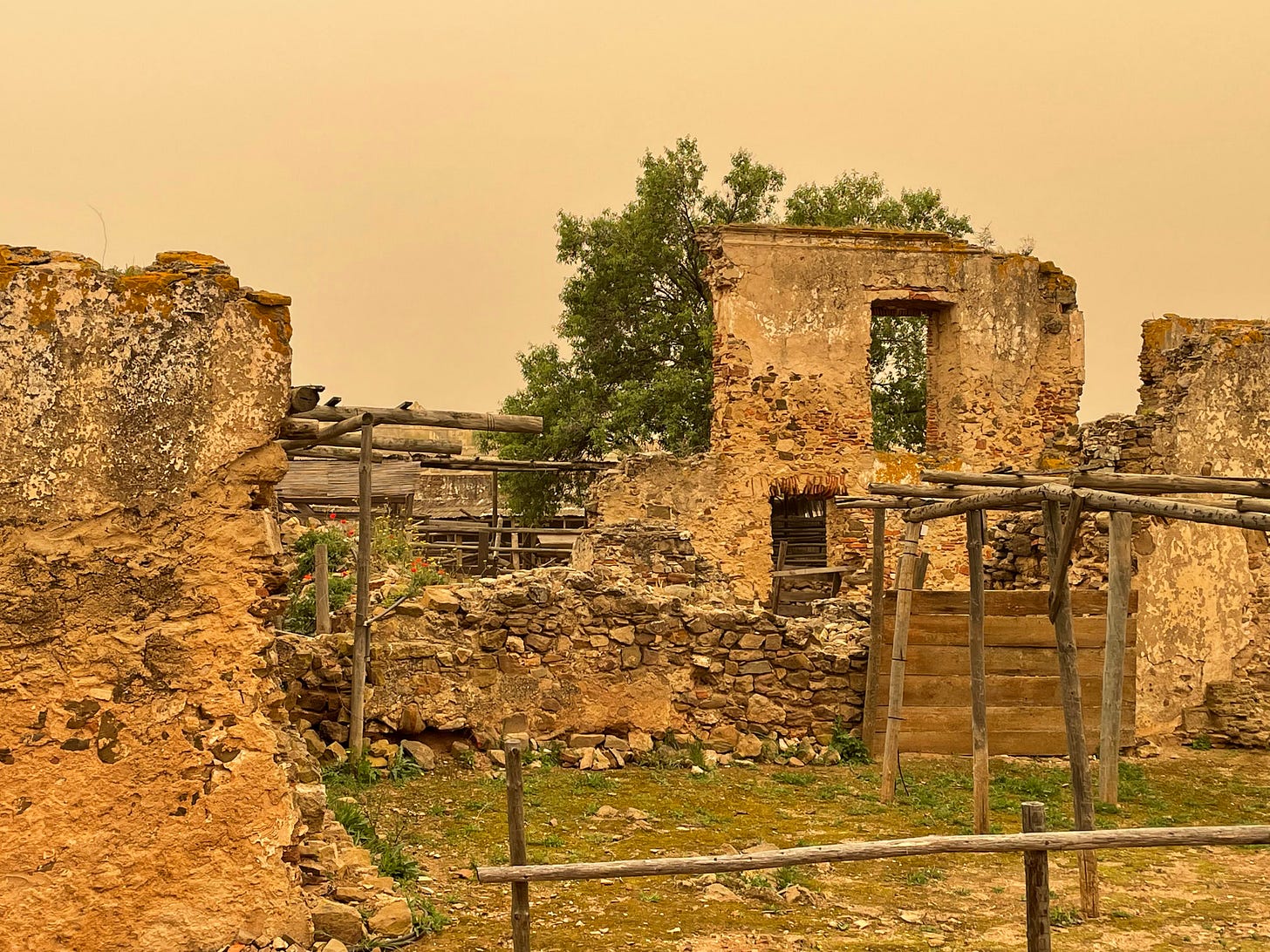We finally had several days of rain! Hallelujah! While it did interrupt our golf plans (we are not Scottish) we welcomed some relief from the drought. And between raindrops, we finally made our way to a castle just up the road.
Castro Marim
Remnants dating back to 5000BC have been found in Castro Marim. Back then, Castro Marim was actually closer to the sea and was a port for several centuries. The Moors occupied this area for many years until the Christian reconquest in the 13th century. Perched on a hill above the Guadiana River, the town had strategic importance guarding against attacks from North Africa and Spain.
Today, Castro Marim is a small parish of about 7,000 residents spread over 300 kilometers just north of Vila Real de Santo Antonio. The center of town has a decidedly rustic feel, with narrow cobblestone streets, lined by small houses, cafes, and abandoned buildings, that transport you back in time. We had visited Castro Marim before. First by bike, when we found the guy who sharpened our knives and again when we visited their flea market. But on this visit, we were on a mission. I had been reading about the Knights Templar and wanted to see firsthand one of their homes.

A Brief History of The Knights Templar
The origins of the Knights Templar date back to 1126, when two Christian knights wanted to form a new order. The original purpose was to guard a church built in Jerusalem, which they believed was built on the site of the Temple of Solomon, and to protect pilgrims traveling there. However, before pursuing this task in earnest there was another small matter that needed to be addressed…specifically conquering the area south of the Douro River that was controlled by the Muslims. In 1128, Pope Honorius II announced the Order of the Knights Templar.
While the Knights Templar’s crusades have been romanticized in the past, most current scholars suggest a different version of history. One in which the Knights conquered and then stole from the local civilians … bandits that left the blood of both Muslims and Christians scattered across the towns and villages they conquered. To the winner went the spoils, and the Knights became very rich and very powerful.
In fact, in the early 14th century, they were so rich and so powerful that they owned a third of Paris and the French royal family was deeply indebted to them. One thing led to another and King Philip IV of France and Pope Clement V agreed something had to be done. The Knights were arrested not only in France but by Papal decree throughout Christendom.
Except for Portugal
That is except in Portugal. Here, King Dinis felt that his Kingdom’s very existence was owed to the Order. He also realized that he needed them to guard the regions bordering Spain. So the King asked the Archbishop of Lisbon to head a commission of inquiry into the charges. The Archbishop, of course, exonerated them…but there was that pesky decree from the Pope. To comply, the King confiscated all the assets of the Order. He then created a new order, the Order of Christ that just so happened to contain all the same knights. Of course, the new order needed some startup capital, so he gave them all the confiscated riches. I love it when a plan comes together…
The Order of Christ’s official headquarters was moved to Tomar. The Convent of the Knights Templar of Tomar, renamed to the Knights of the Order of Christ in 1344, is now a UNESCO World Heritage Center that we must visit. The order was secularized in 1789, and dissolved in 1910…however, some believe the order went underground and still exists today.
Visiting the Castle
If you visit the Castle in Castro Marim you won’t find flat walking paths like those we found in Silves. While there are a few exhibit areas with educational placards (in Portuguese and many in English) this is a pretty rustic place. The paths are large stones and very uneven…so take care. There have not been attempts to restore much of the interior space; but as we paid the senior rate of 0.60€ to visit, we were glad we went.
One final note, much of what I learned about this topic comes from a wonderful book called The First Global Village: How Portugal Changed the World. If you want to read up on the history of Portugal you might want to pick up a copy.
Next Week: questions to ask oneself and a quick trip to Seville.








Share this post